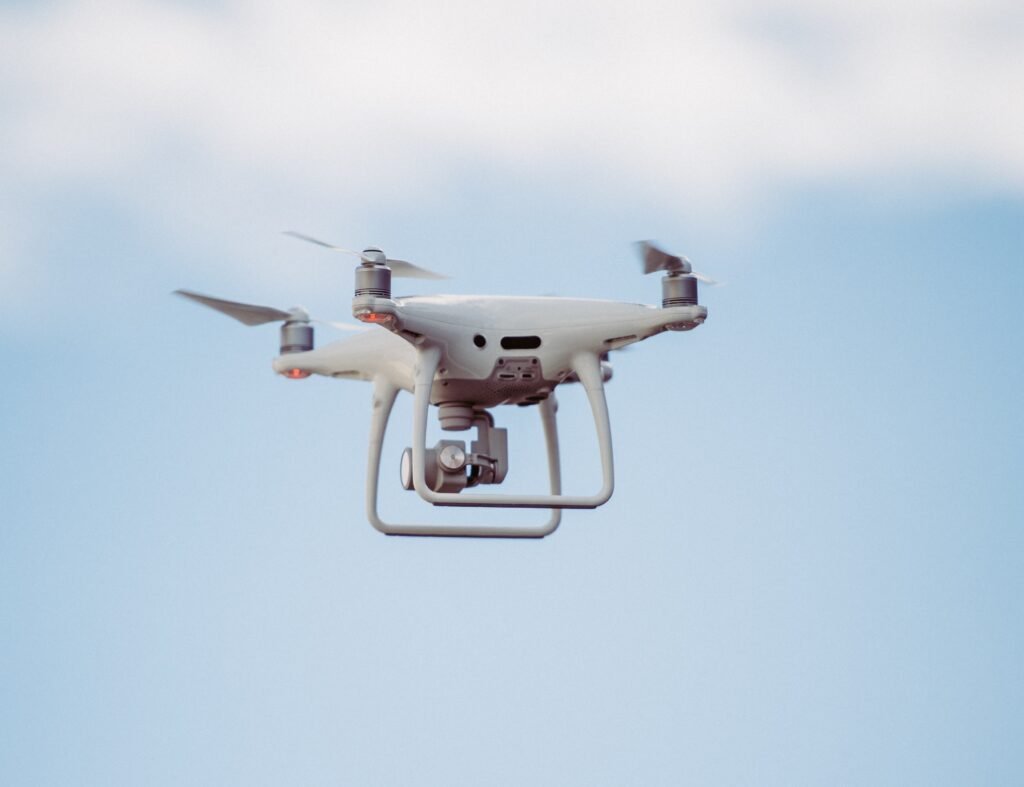In the world of wireless video monitors, understanding the difference between digital and analogue can be a game-changer. If you’ve ever wondered which technology to choose, fear not! We’re here to break it down for you. Digital wireless video monitors provide crystal clear images and sound, whilst analogue counterparts offer a more traditional approach. Both have their merits, but it ultimately boils down to your specific needs and preferences. So, let’s explore the world of wireless video monitors and unveil the key distinctions that will help you make an informed decision.
Resolution
Analog
Analog wireless video monitors have a lower resolution compared to their digital counterparts. This means that the images displayed on analog monitors might not be as clear or detailed. Analog signals are transmitted in a continuous wave form, which can result in a loss of image quality and sharpness. However, the resolution of analog monitors can still be sufficient for certain applications, such as monitoring a baby’s room or a small office space.
Digital
Digital wireless video monitors offer a higher resolution and sharper image quality. The signals in digital monitors are transmitted as discrete bits of information rather than continuous waves, allowing for a more accurate representation of the video feed. This means that you can expect clearer and more detailed images on a digital monitor. The higher resolution of digital monitors makes them ideal for applications that require more precise video monitoring, such as surveillance systems or professional video production.
Signal Quality
Analog
Analog wireless video monitors can be susceptible to signal interference, resulting in poor signal quality. The analog signals can be affected by various factors such as electromagnetic interference from other devices, obstacles in the transmission path, or distance between the monitor and the camera. This can lead to a degraded image or even a loss of signal.
Digital
Digital wireless video monitors generally provide a better signal quality compared to analog monitors. Digital signals are less susceptible to interference and can tolerate a higher amount of signal degradation without affecting the image quality significantly. Additionally, digital monitors often employ error correction techniques to compensate for any signal loss during transmission, ensuring a consistent and higher-quality video feed.

This image is property of images.unsplash.com.
Interference
Analog
Analog wireless video monitors are more susceptible to interference compared to digital monitors. The analog signals can be easily disrupted by other electronics operating on similar frequencies, such as cordless phones or Wi-Fi routers. Additionally, physical obstacles like walls or large objects can obstruct the analog signals, leading to interference and signal degradation.
Digital
Digital wireless video monitors have a higher resistance to interference compared to analog monitors. The digital signals are transmitted in discrete bits of information, making them less prone to external sources of interference. Digital monitors also have the advantage of operating on different frequency bands, reducing the chance of signal overlap with other devices. This ensures a more reliable and interference-free video monitoring experience.
Range
Analog
Analog wireless video monitors typically have a shorter range compared to digital monitors. The range of an analog monitor can be affected by the quality of the signal and the presence of obstacles. As the distance between the camera and the monitor increases, the analog signal can weaken and result in a loss of video feed. This makes analog monitors more suitable for short-range monitoring applications.
Digital
Digital wireless video monitors generally have a longer range compared to analog monitors. The digital signals can travel further without experiencing significant degradation, allowing for a wider coverage area. Digital monitors also have the advantage of using technologies such as signal amplification and error correction, which further enhance their range capabilities. This makes digital monitors a better choice for applications that require long-range video monitoring, such as large properties or outdoor surveillance.

This image is property of images.unsplash.com.
Installation
Analog
Analog wireless video monitors are relatively easy to install and set up. The cameras and monitors usually come pre-paired, so all you need to do is connect the camera to a power source and place it in the desired location. The analog signals can be received directly by the monitor without the need for additional network infrastructure or complicated setup procedures.
Digital
Digital wireless video monitors can be slightly more complex to install compared to analog monitors. The cameras and monitors need to be paired and connected to the same network for the signals to be transmitted and received. This might involve configuring network settings, such as entering Wi-Fi passwords or IP addresses. However, many digital monitors now come with user-friendly interfaces and step-by-step instructions, making the installation process more straightforward for the average user.
Security
Analog
Analog wireless video monitors are generally considered less secure compared to digital monitors. Since analog signals are transmitted in an open frequency range, they can be susceptible to interception or unauthorized access. This means that the video feed from an analog monitor can potentially be accessed by someone with the right equipment and knowledge. This can be a concern for applications where privacy and security are important, such as home surveillance.
Digital
Digital wireless video monitors offer a higher level of security compared to analog monitors. The digital signals are encrypted, making it much more difficult for unauthorized individuals to intercept or access the video feed. This ensures that the video monitoring remains private and secure, giving users peace of mind, especially in sensitive environments such as businesses or government facilities.
This image is property of images.unsplash.com.
Price
Analog
Analog wireless video monitors are generally more affordable compared to digital monitors. Since analog technology has been around for a longer time and is considered less advanced, the hardware and equipment required for analog monitoring systems are often cheaper. This makes analog monitors a cost-effective solution for those who have budget constraints or simpler monitoring needs.
Digital
Digital wireless video monitors tend to be more expensive compared to analog monitors. The advanced technology and additional features offered by digital monitors contribute to higher manufacturing and development costs, resulting in a higher price point. However, it’s important to consider the benefits and advantages that digital monitors bring, such as higher resolution, better signal quality, and enhanced security, which can justify the higher price for certain applications or users.
Flexibility
Analog
Analog wireless video monitors are generally less flexible compared to their digital counterparts. The analog signals have limited compatibility with other devices or systems, making it challenging to integrate them into larger surveillance or monitoring setups. The lack of digital transmission also means that analog monitors cannot take advantage of advanced features such as remote access or digital zoom.
Digital
Digital wireless video monitors offer greater flexibility compared to analog monitors. The digital signals can be easily transmitted and received by various devices, allowing for compatibility with other systems or devices. Digital monitors can be integrated into larger surveillance networks or connected to mobile devices for remote monitoring. Digital technology also enables features like two-way audio communication and the ability to pan, tilt, or zoom the camera remotely, providing users with more control and flexibility in their monitoring setup.
Accessibility
Analog
Analog wireless video monitors are generally more accessible and easier to use for users who are not tech-savvy. The simplicity of the analog technology and the straightforward installation process make it a user-friendly option for those who prefer a plug-and-play solution. Analog monitors often come with intuitive controls and interfaces, ensuring that even beginners can operate them without much difficulty.
Digital
Digital wireless video monitors might require more technical knowledge and familiarity with network settings for users to fully utilize their capabilities. Setting up Wi-Fi connections, configuring network settings, or accessing the monitor remotely might be challenging for users who are not technologically inclined. However, digital monitors are becoming more user-friendly, with intuitive interfaces and smartphone apps that make the monitoring experience more accessible to a wider range of users.
Reliability
Analog
Analog wireless video monitors are generally considered reliable for shorter range applications and in areas with minimal signal interference. As long as the signal remains strong and stable, analog monitors can provide consistent video monitoring. However, in environments with more obstacles or electronic interference, the reliability of analog monitors might be compromised, leading to signal loss or lower image quality.
Digital
Digital wireless video monitors are considered more reliable compared to analog monitors. The digital signals are more resistant to interference and can tolerate greater signal degradation without significant impact on the video feed. Additionally, digital monitors often include error correction techniques that can compensate for any signal loss during transmission, ensuring a consistent and reliable monitoring experience. This makes digital monitors a more dependable option for applications where uninterrupted video monitoring is crucial, such as security systems or critical surveillance.
In conclusion, the difference between digital and analog wireless video monitors lies in several key aspects, including resolution, signal quality, interference resistance, range, installation complexity, security, price, flexibility, accessibility, and reliability. While analog monitors might be more affordable and user-friendly, they generally offer lower resolution, are more susceptible to interference, and have limited integration capabilities. On the other hand, digital monitors provide higher resolution, better signal quality, enhanced security, and more flexibility, but at a higher price point and with slightly more complex installation processes. Understanding these differences can help you select the right wireless video monitor for your specific needs and requirements.

Meet Penny Sterling, the editor behind the captivating content of our blog, “Wireless Video Monitor.” With a background in electrical engineering and a deep passion for technology, Penny has become a leading authority in the world of wireless video monitors. Her ability to distill complex concepts into accessible articles has made her a trusted guide for both tech enthusiasts and newcomers to the field. Penny’s unwavering commitment to research and staying up-to-date ensures that “Wireless Video Monitor” remains an authoritative source for reliable information. Get ready to embark on a journey of wireless video monitor exploration with Penny Sterling as your knowledgeable and dedicated mentor.
